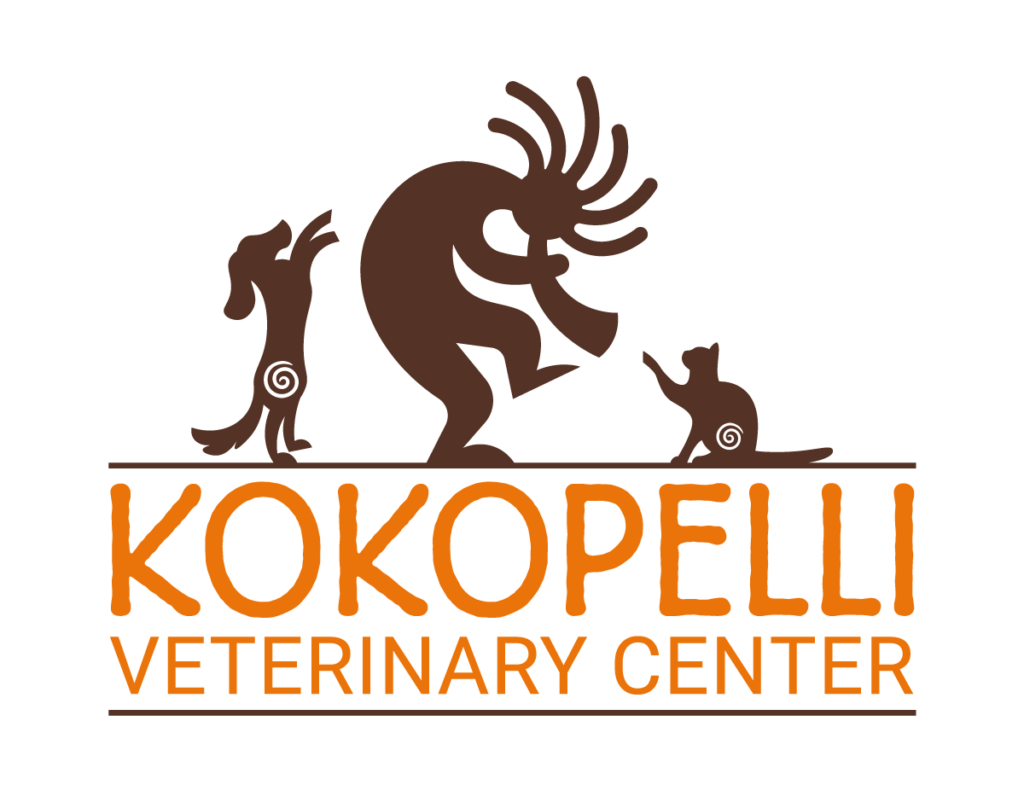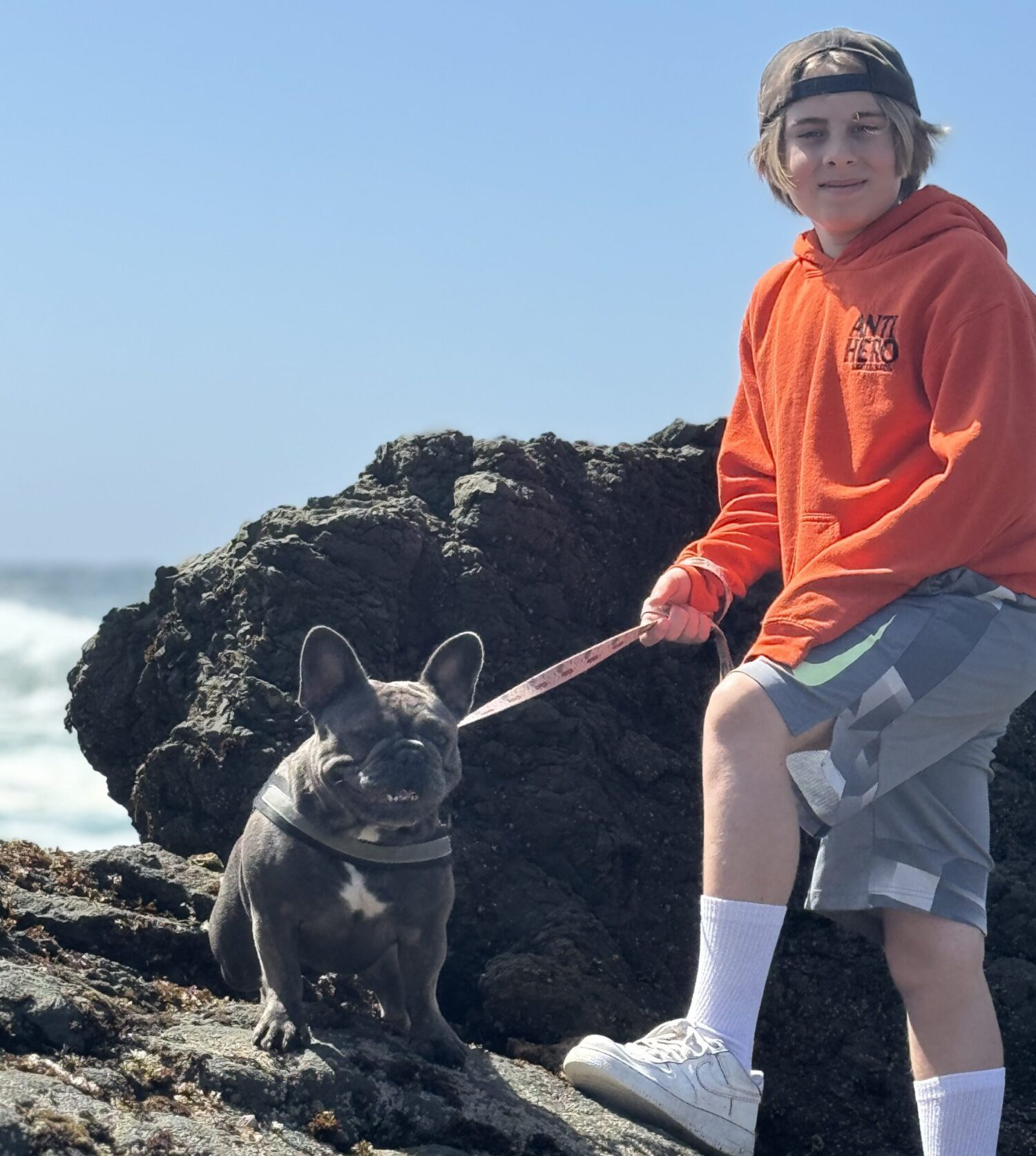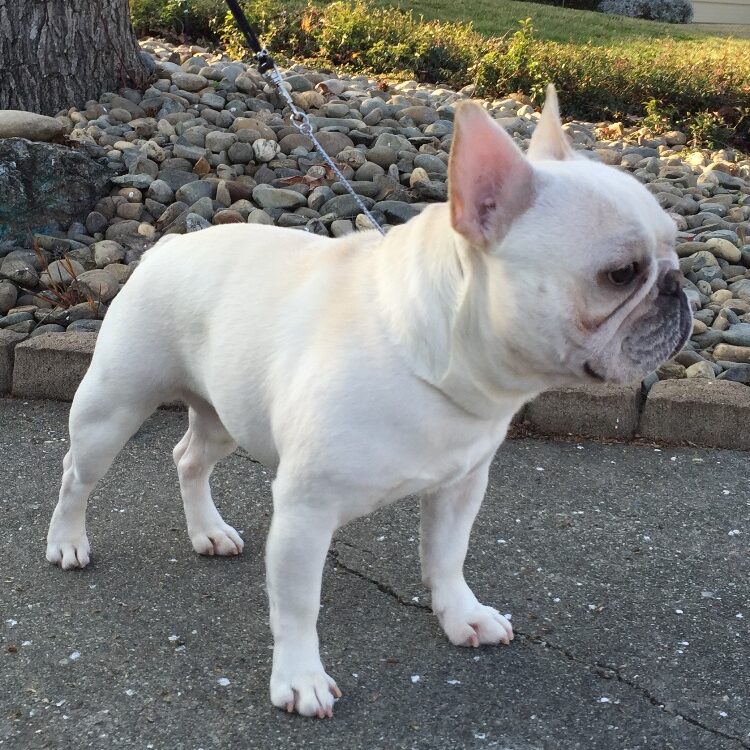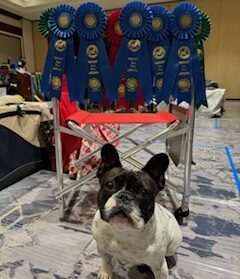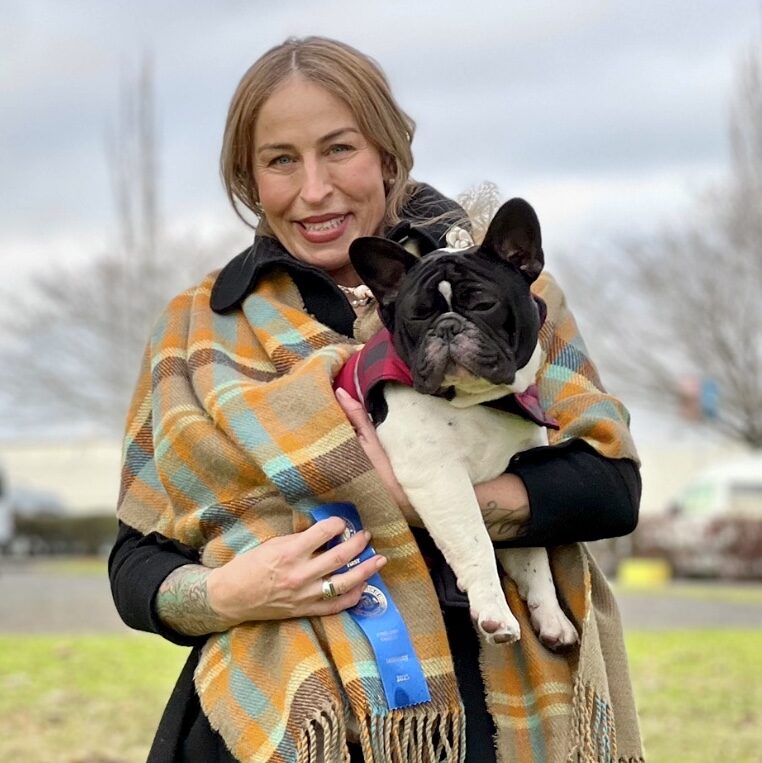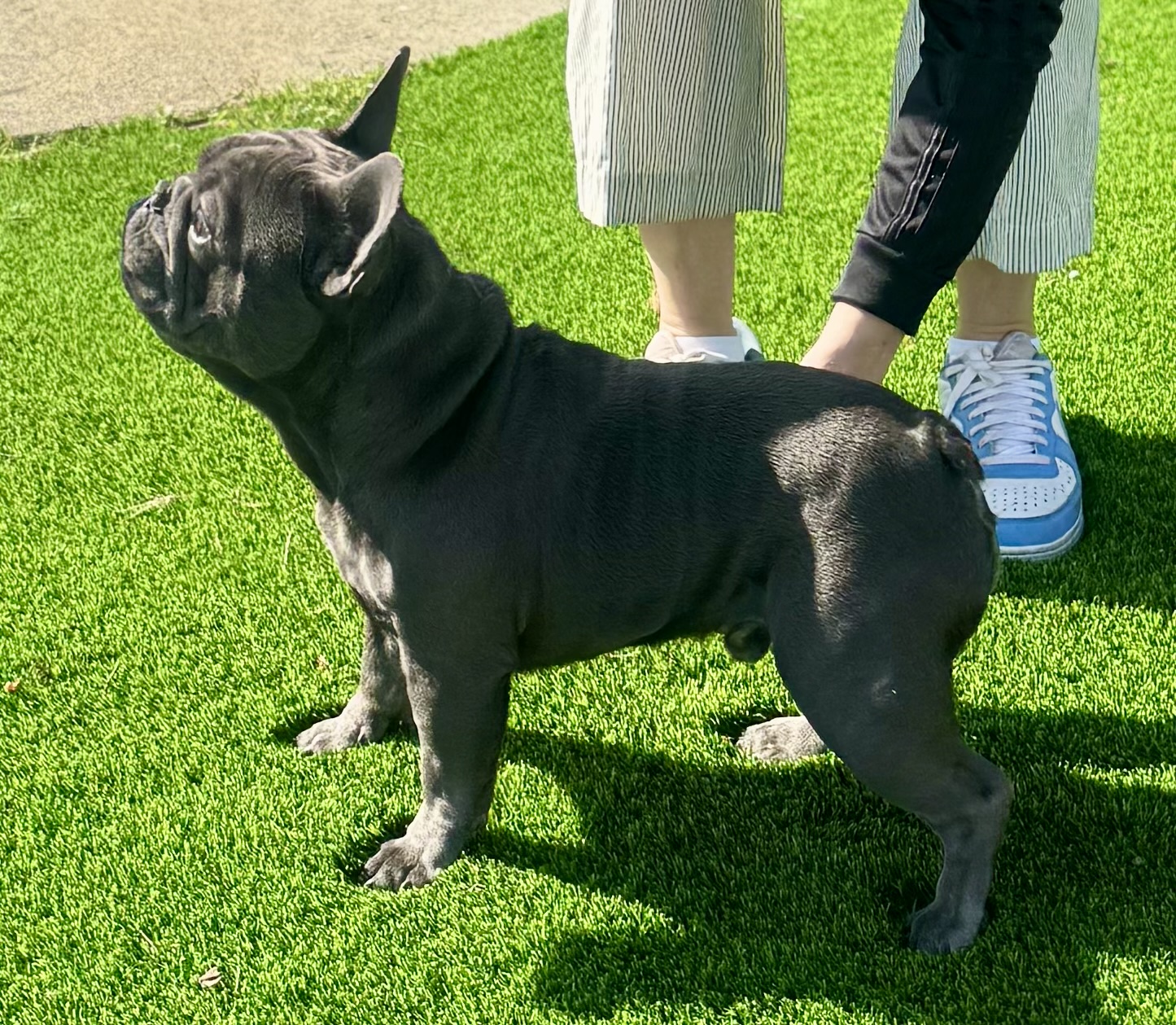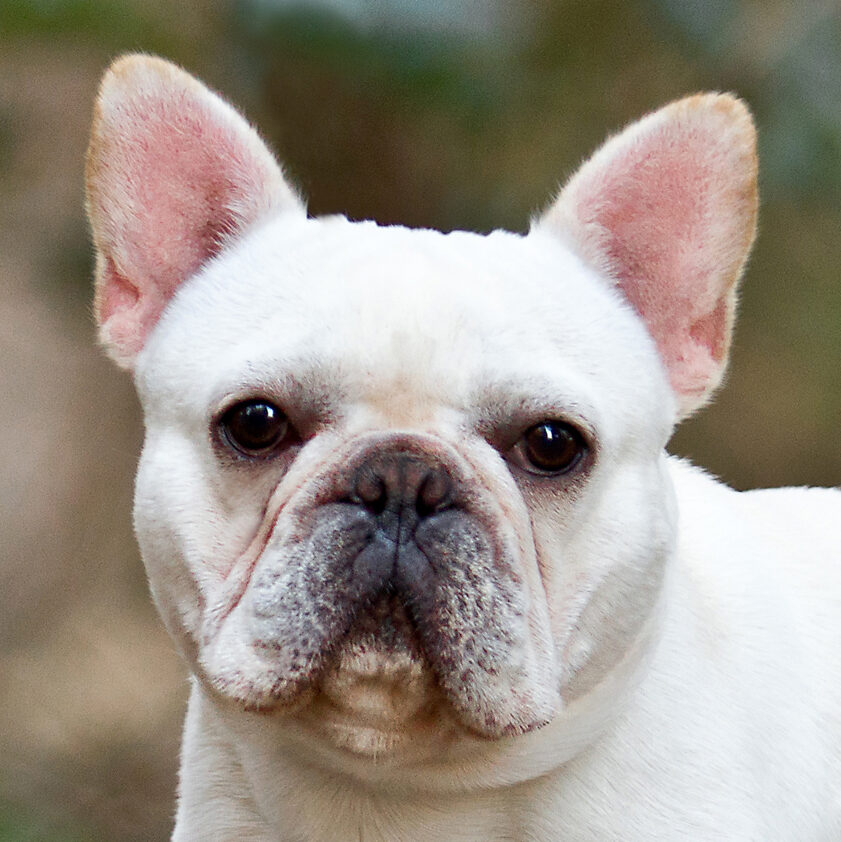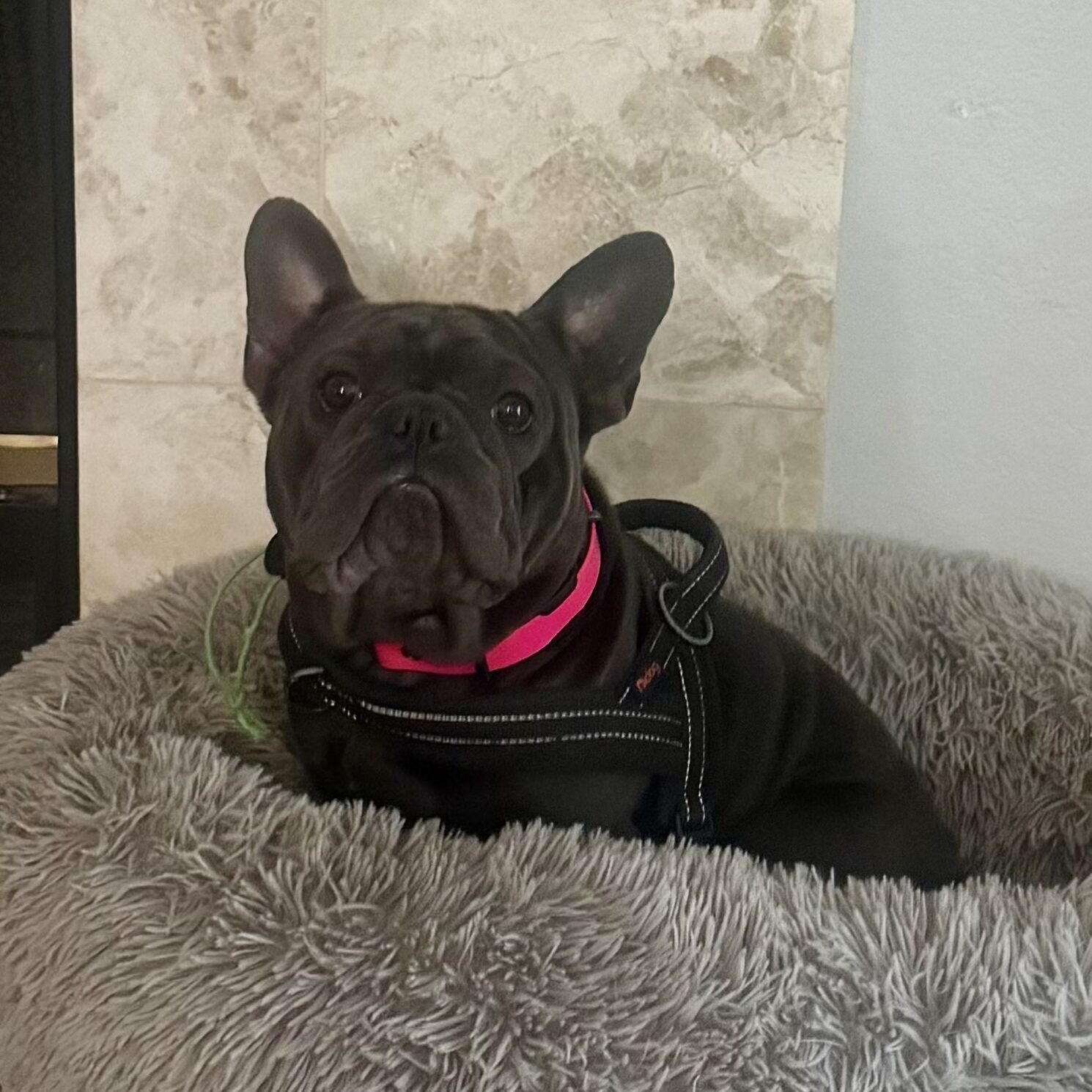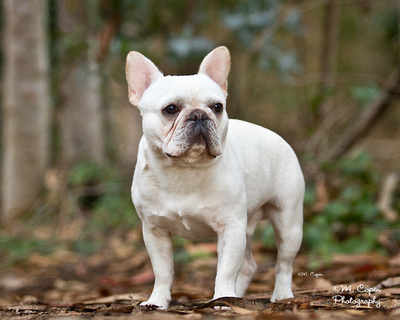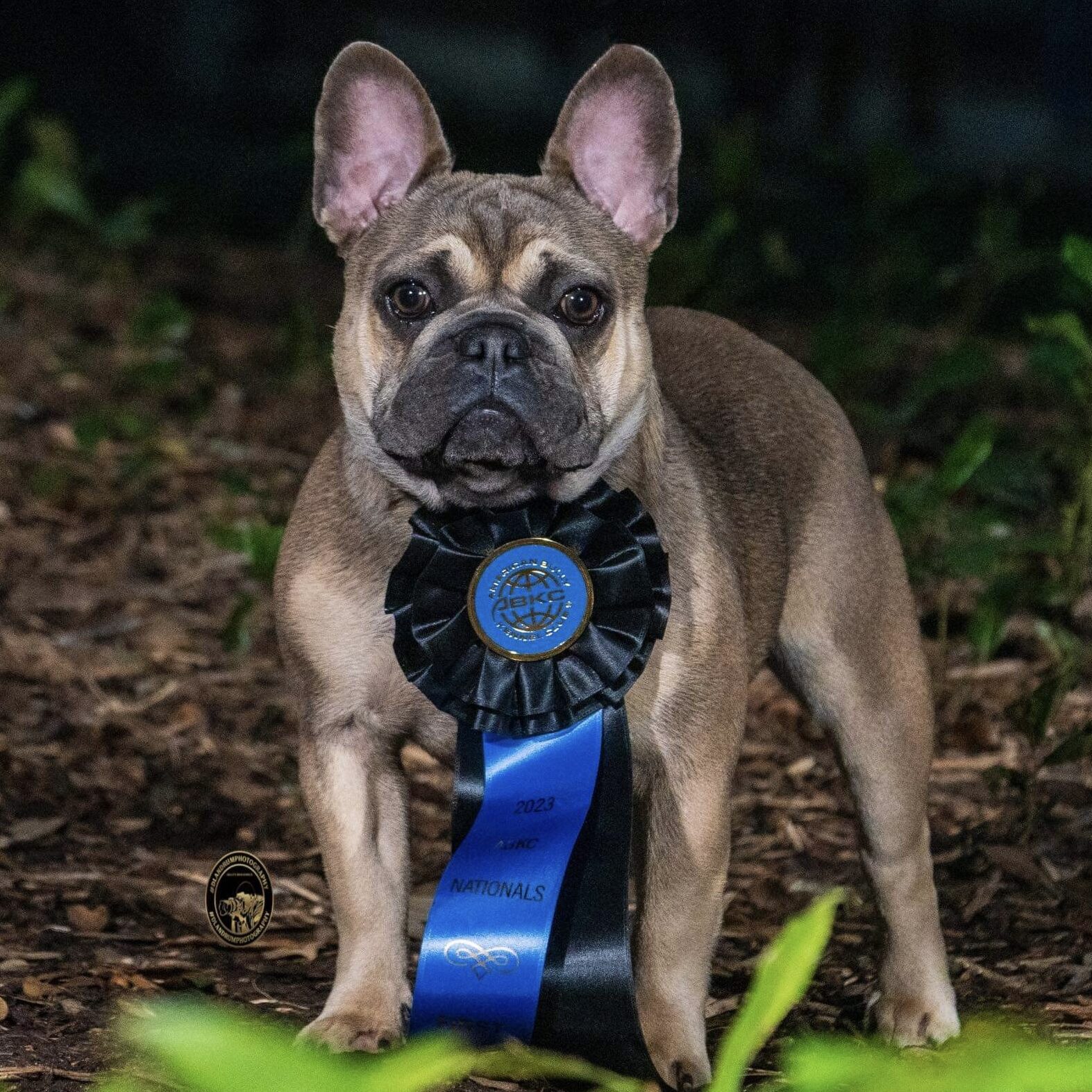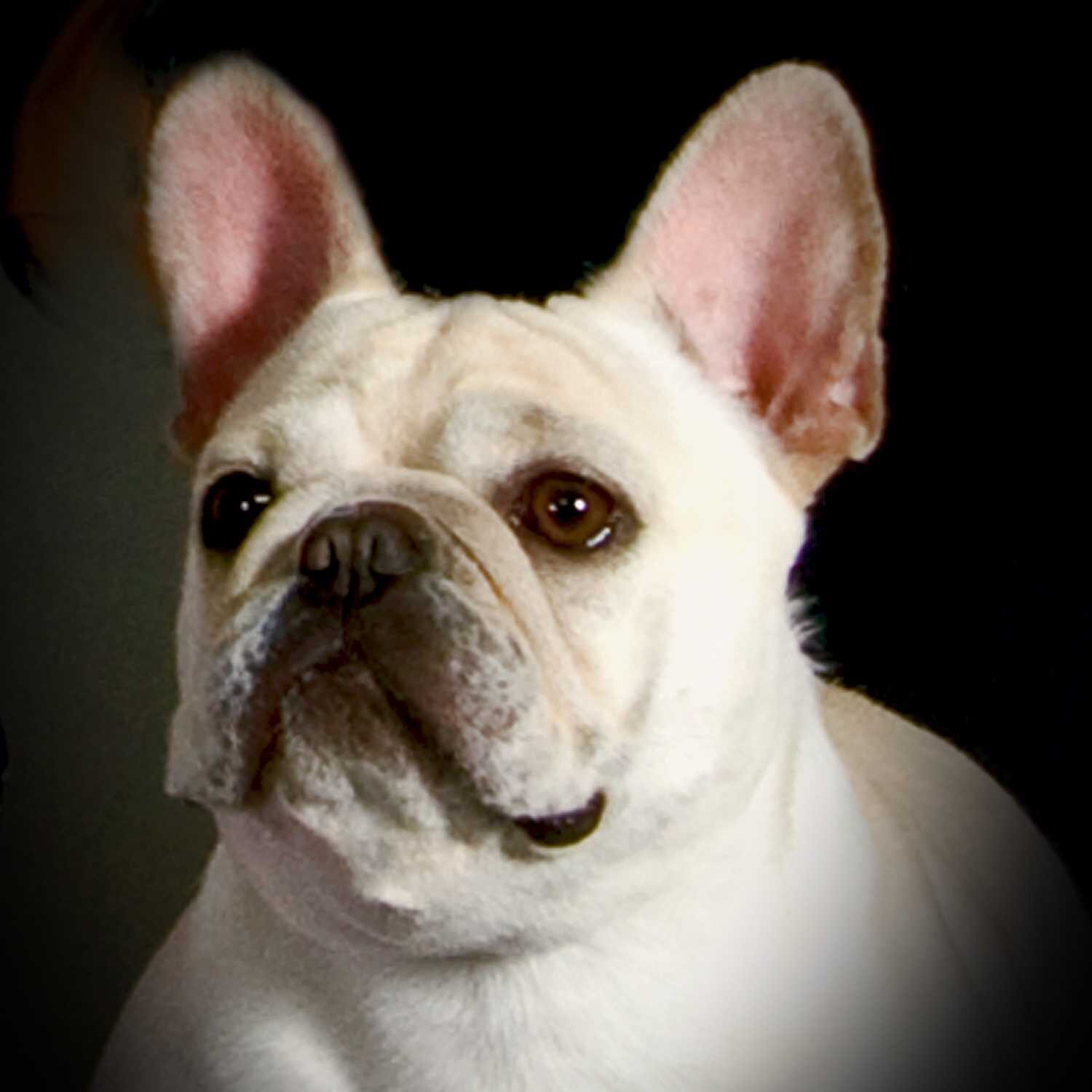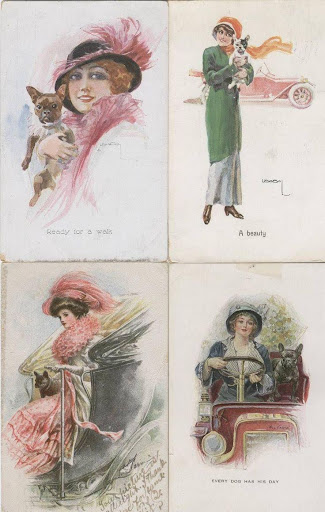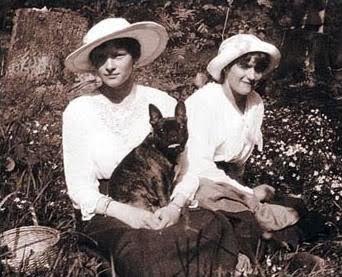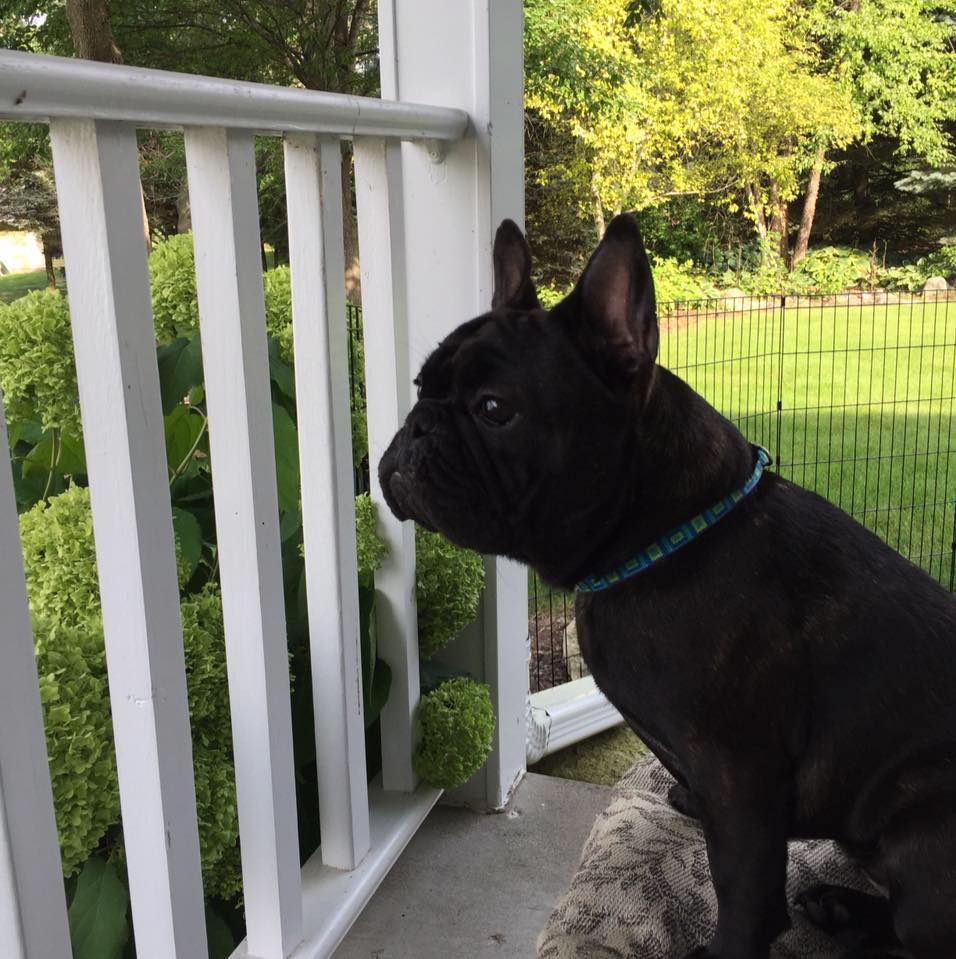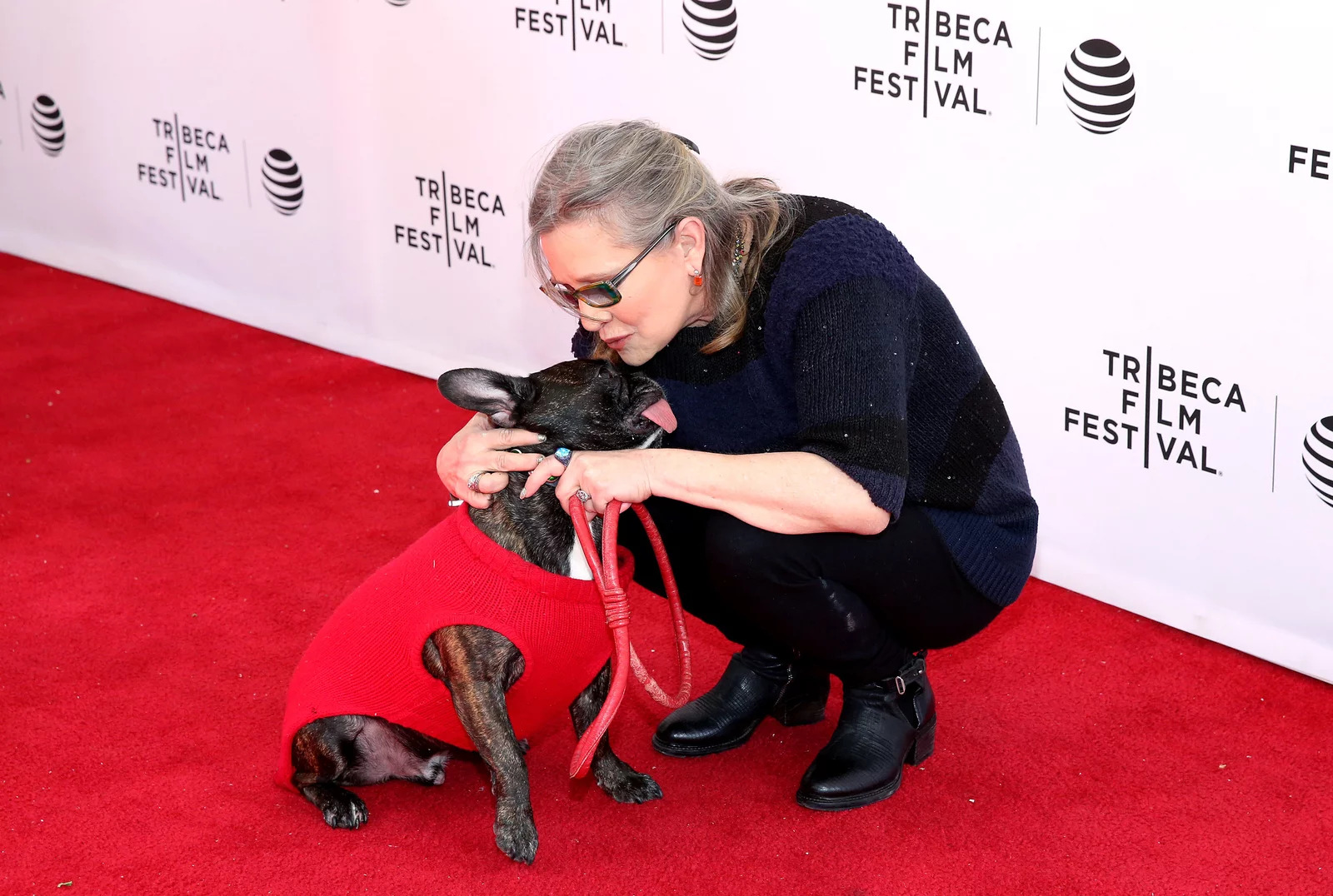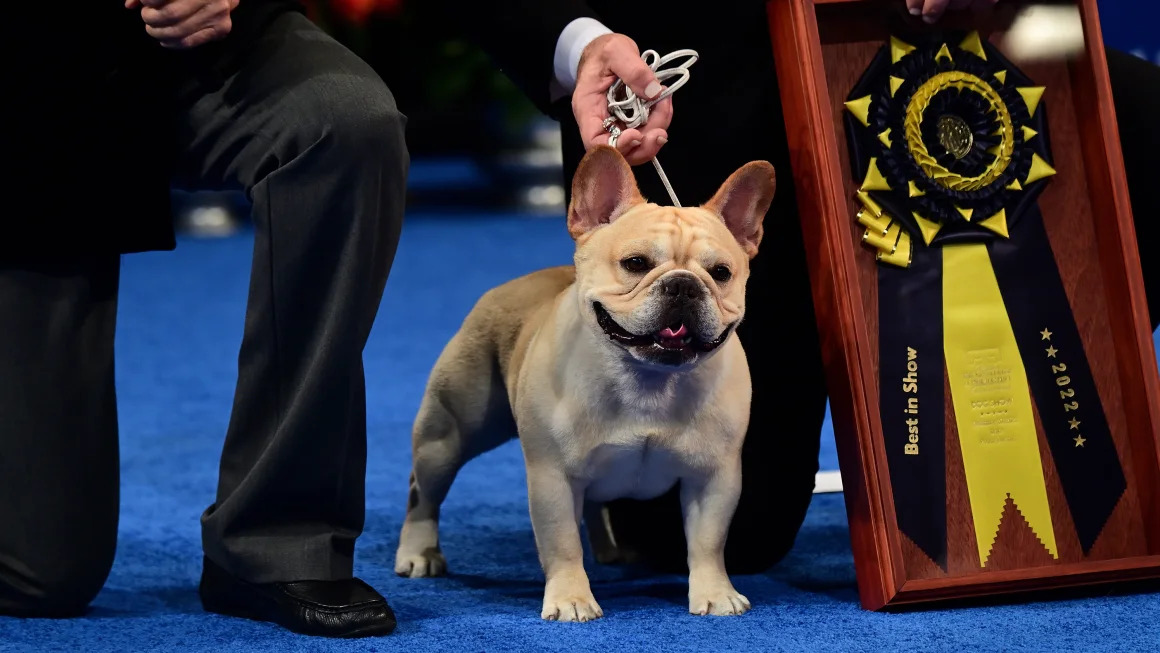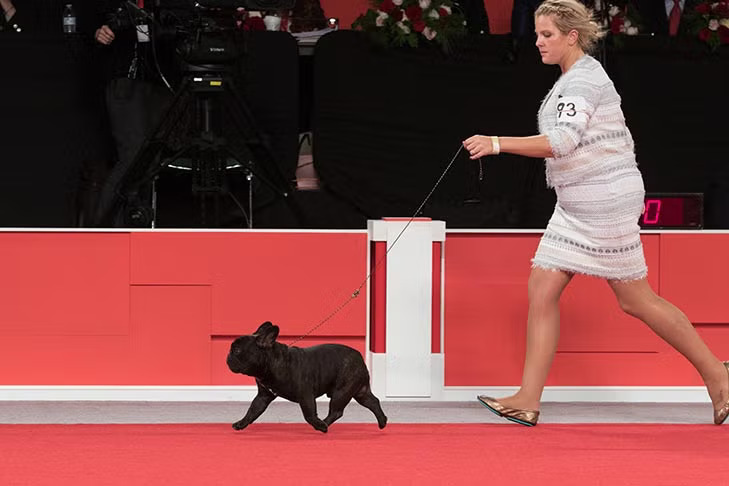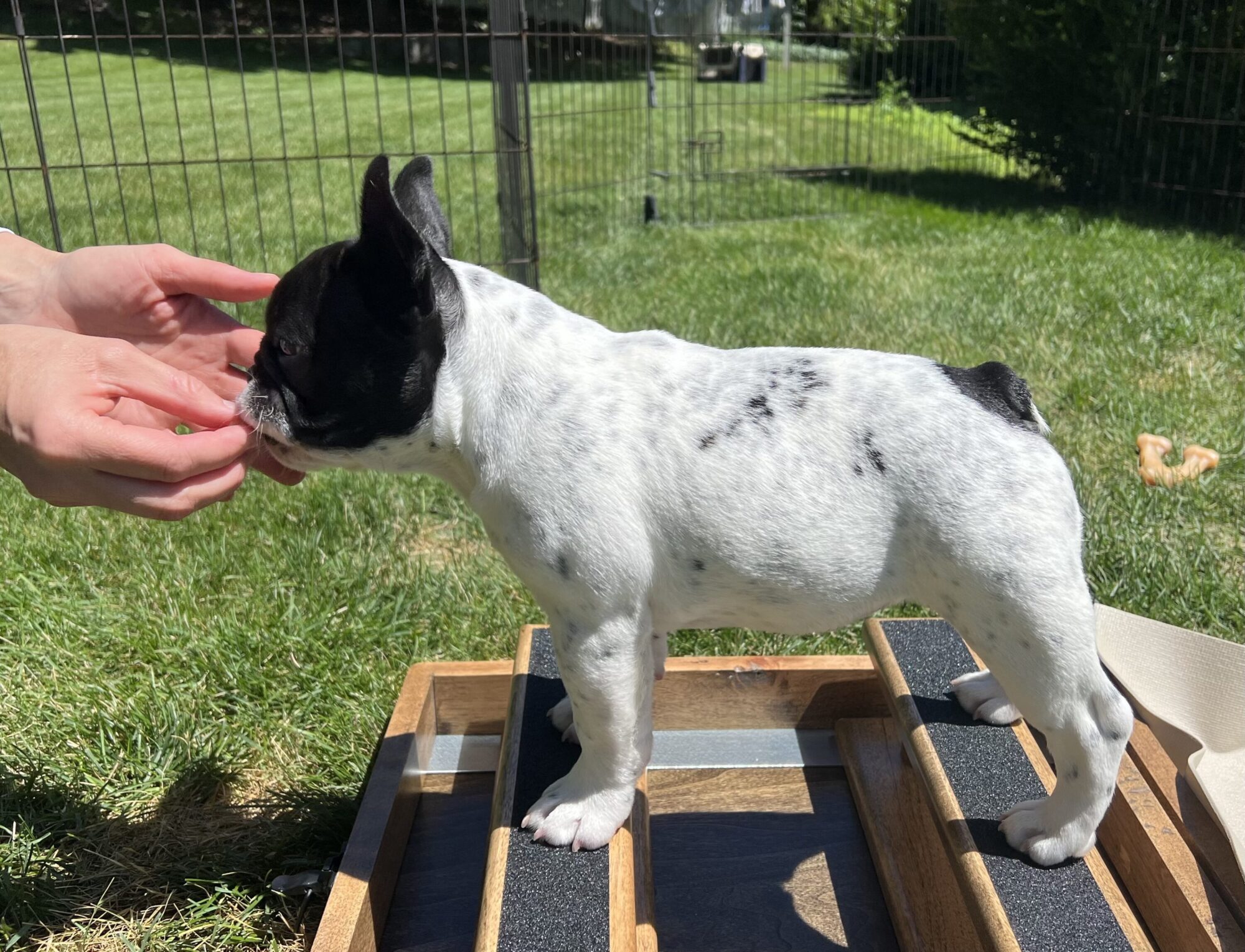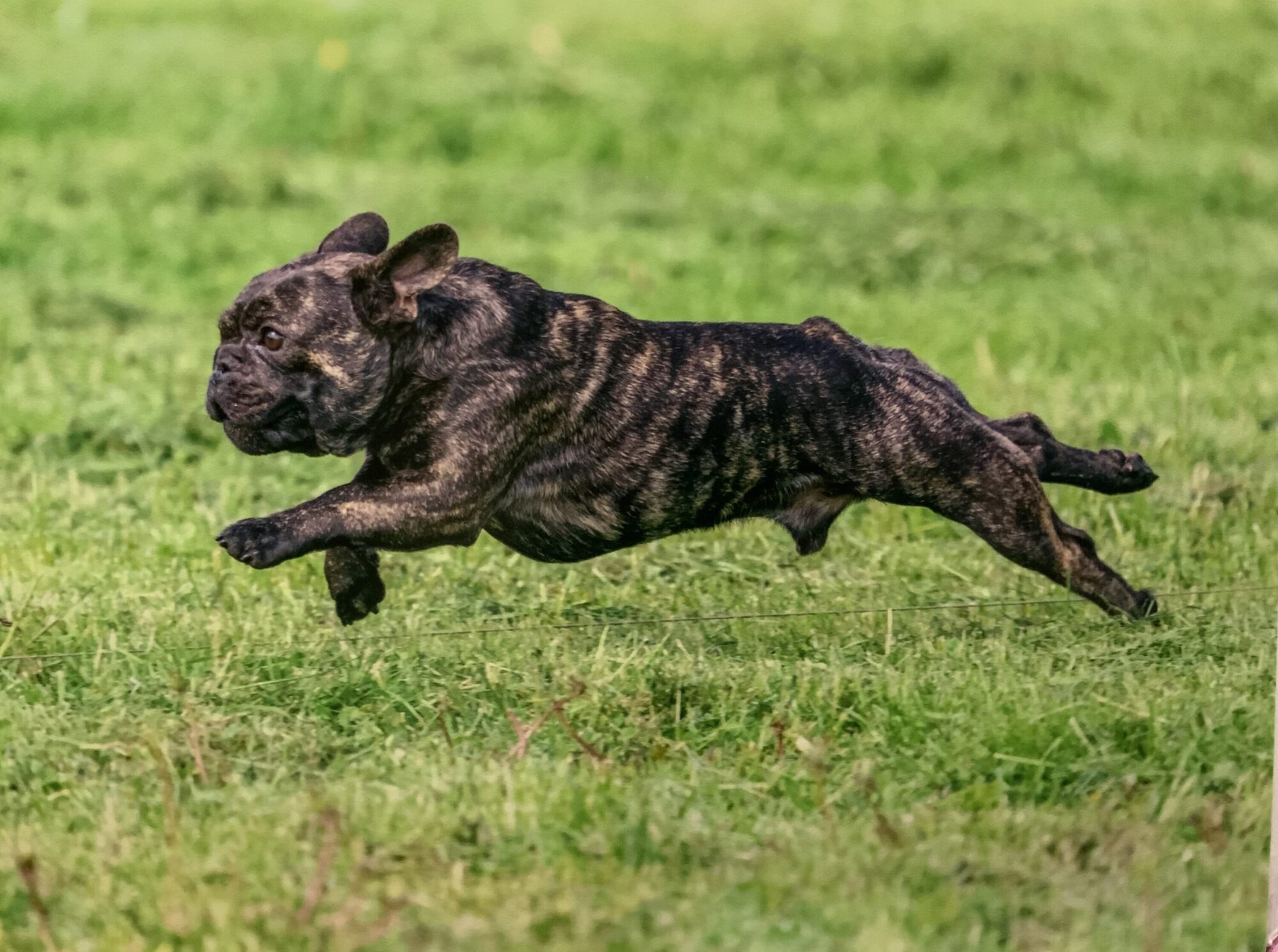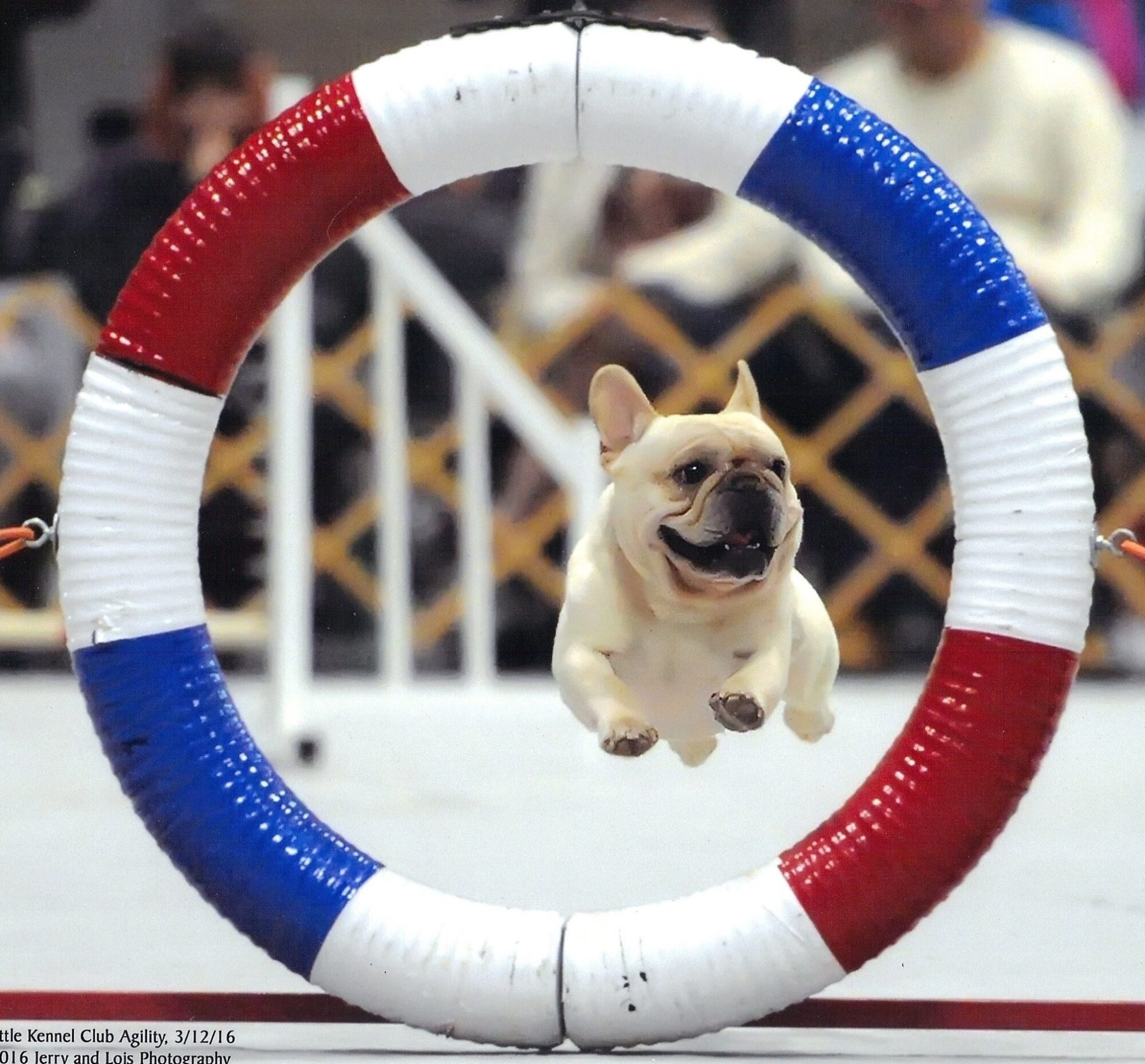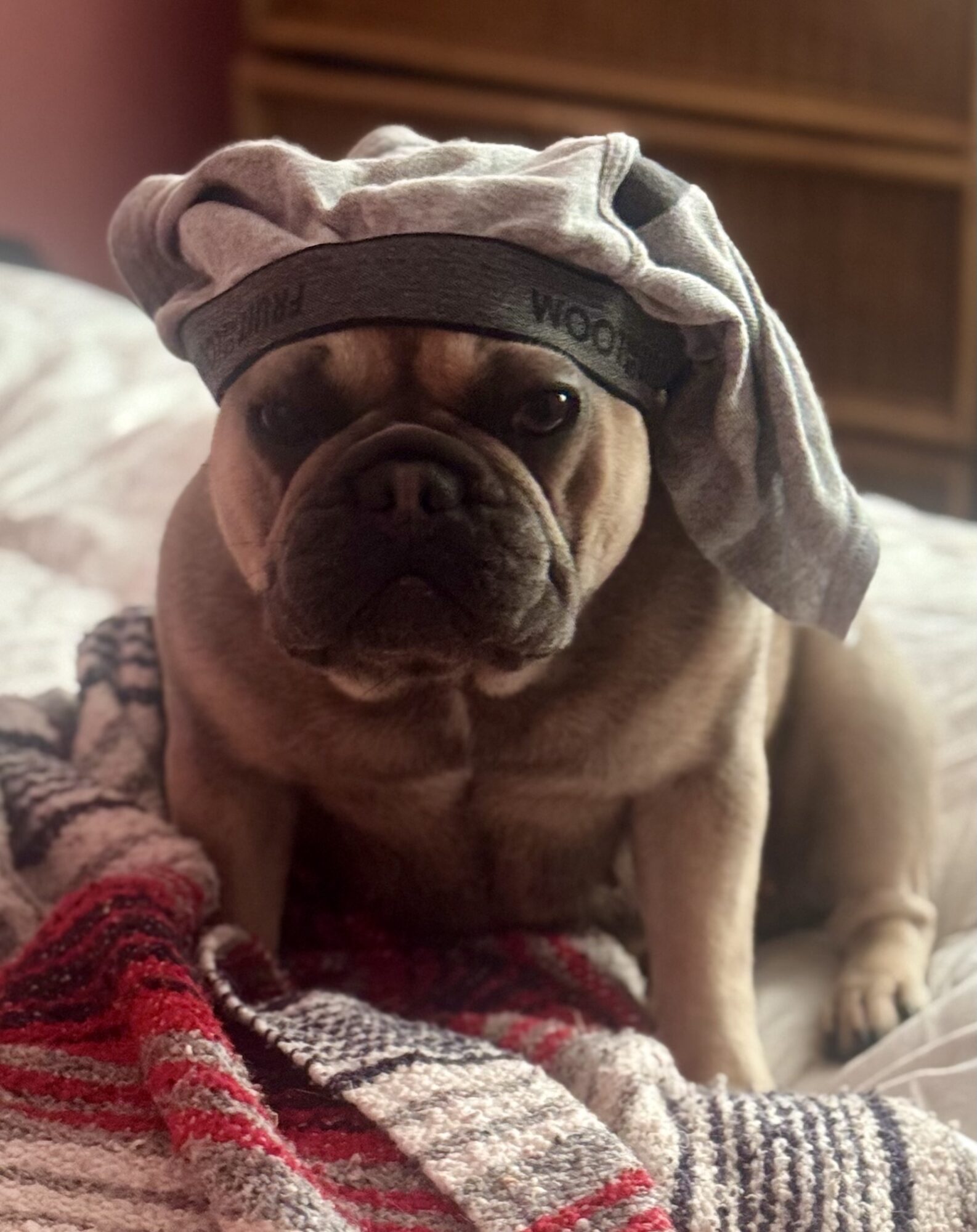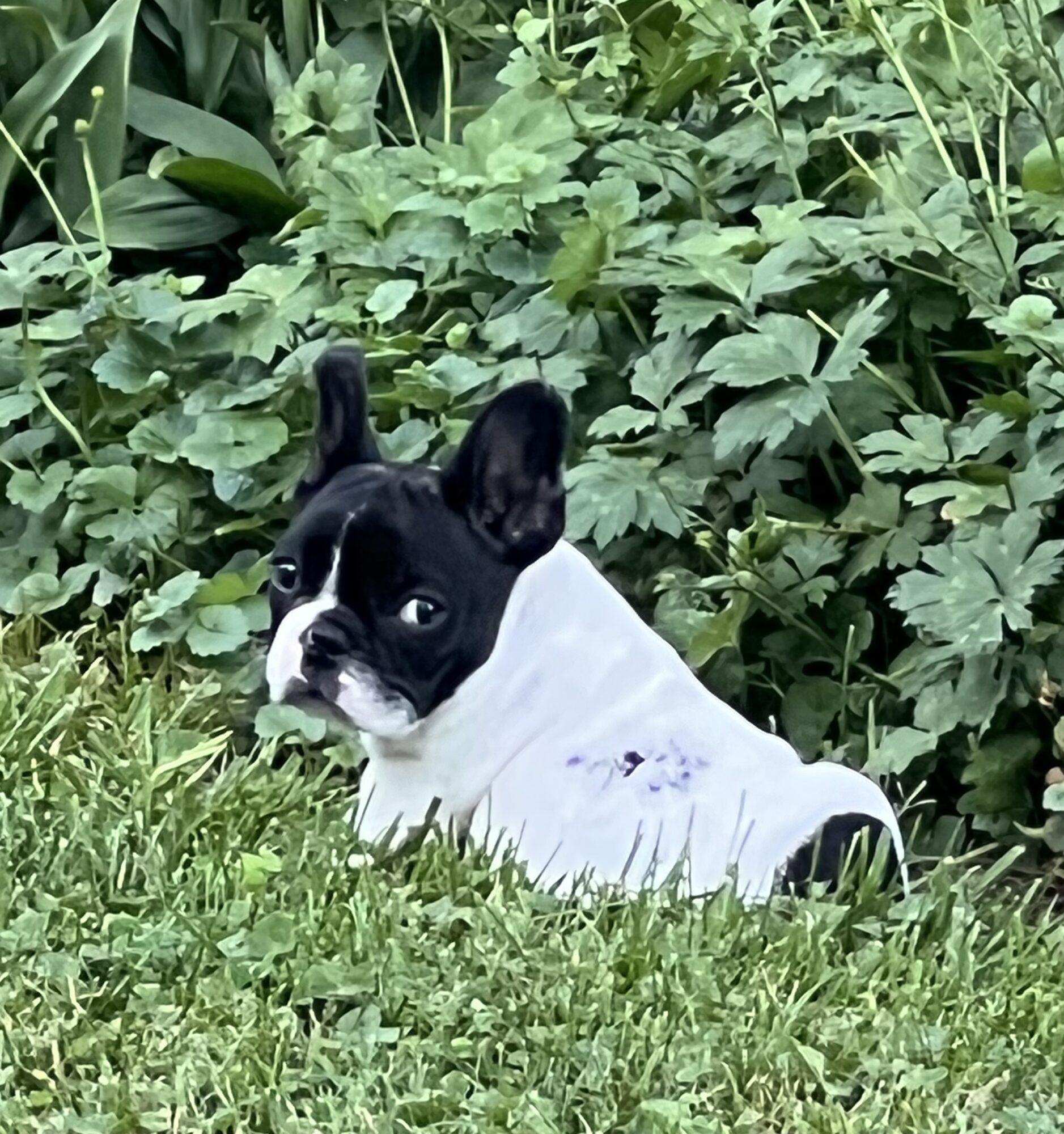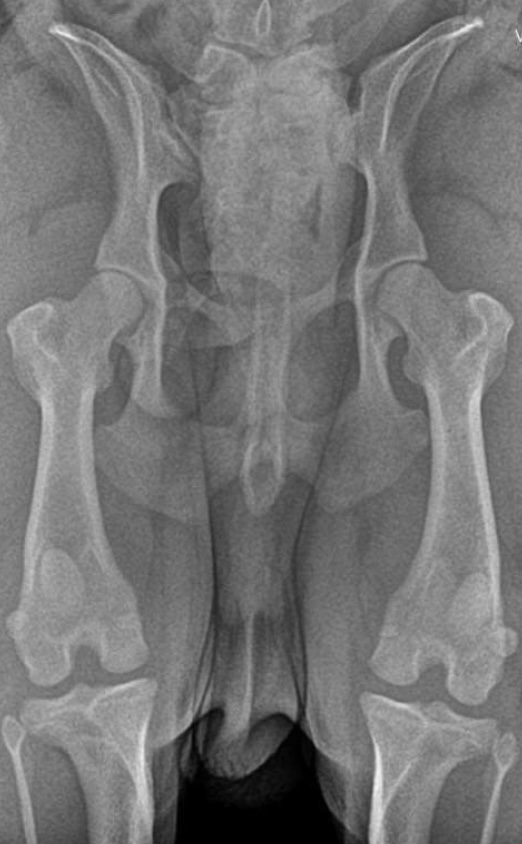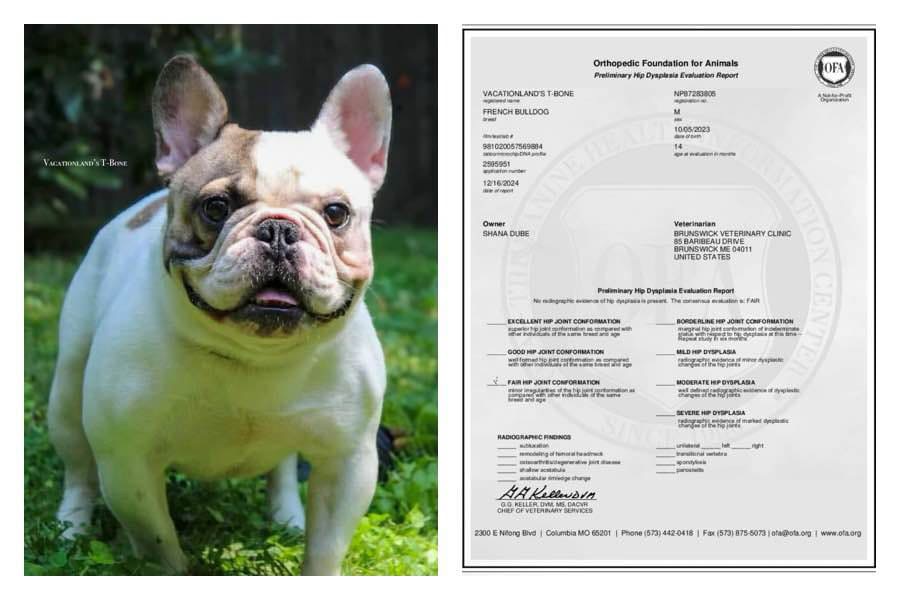The post-impressionist artist Henri de Toulouse-Lautrec painted Bouboule, French Bulldog of Madame Palmyre, owner of the famous café La Souris.
Your Trusted Expert in Breeding and Maintaining Healthy French Bulldogs
All About French Bulldogs
Breed Name:
French BulldogPersonality:
Small, playful clown, irresistible with an outsized personalityAKC Group:
Non-SportingHistory and Characteristics:
Much is made of the French Bulldog originating in the brothels of Paris. There is some truth to that, but just some. The parent breed for the French Bulldog is the English Bulldog, which is much larger and, in the 1800s, aggressive. It needed to be in order to do its intended job of bullbaiting. This sport was outlawed in the 1830s and after that the Bulldog had to transition into a companion dog. It found its way into the show dog ring and began competing in different size classes, the smallest of which was the English Toy Bulldog.
About this same time the Industrial Revolution replaced skilled lacemakers in England with machines and low-wage workers. Many of these talented women moved across the English Channel to Normandy, where lacework was still valued. With them they took their cute, little Toy Bulldogs. While the low, folded ears were valued by bulldog purists in England, the French were enchanted by the dogs that had upright, rounded, bat-like ears, and selected for that in their breeding. The charming little dogs were popular in all levels of society. They became a necessary accouterment of the aforementioned belles de nuit, so much so that they were featured with the women on postcards.
The Grand Duchess Tatiana Nikolaevna, daughter of Tsar Nicholas II had a Frenchie named Ortipo, who may have met the same sad fate as the rest of the Russian imperial family.
American tourists fell in love with the spunky, cute little dog and brought them back across the Atlantic where their popularity grew. Americans founded the first French Bulldog Club, along with writing a breed standard, solidifying the now-iconic “bat” ears.
All dog breeds were created for a purpose, many of which are now anachronistic, leaving those breeds to either languish into obscurity, or hopefully make the transition into the realm of strictly companion animals. The French Bulldog was created for the sole purpose of being a great friend and companion, and that is what it has remained throughout its history to the present time.
Fun Fact About French Bulldogs
How Popular Are French Bulldogs?
Service to Humans:
French Bulldogs were created to be the best of companions to their human families and that is still how they serve. Besides just being great pets, they can be excellent support animals and can perform important tasks for some humans like alerting to sounds (doorbells, alarms, etc.) and retrieving items.Prominent Canines
Famous French Bulldogs:
Many celebrities own French Bulldogs, including...- Lady Gaga with Miss Asia, Koji, and Gustav
- Dwayne Johnson with Hobbs (who also made a cameo in the movie that gave him his name, Fast and Furious: Hobbs and Shaw)
- Reese Witherspoon with Pepper and Minnie Pearl
- Megan Thee Stallion with 4oe and Oneita
- Martha Stewart with Crème Brûlée and Bête Noir
- John Legend with Pippa
- Madonna with Olga
- Hugh Jackman with Dali
- Carrie Fisher with her Frenchie, Gary Fisher, who made a CGI-modified cameo in her last Star Wars film, The Last Jedi
Notable Champions:
: In 2022, Winston won Best in Show at the National Dog Show and was the Non-Sporting Group Winner at Westminster in 2023. It is notable that Winston has been OFA certified for Brachycephalic Airway Obstructive Syndrome as an RFG grade 1 (see below), which highlights the importance of breeding Frenchies who breathe well.Breeder Insights
Kokopelli (and Kokopelli-adjacent) French Bulldogs in Action:
Local French Bulldog Breeders:
What We Love About French Bulldogs:
- Great personality: they kind of have a sense of humor. Their funny actions and reactions to our actions are forever entertaining. Even their velociraptor-like vocalizations when calling for attention will keep you laughing.
- Surprising to some, a well-bred Frenchie can be an excellent performance dog, excelling at agility, Fast CAT, and even scent work!
Be Aware of...
- Swimming—No, no, and no. They are front-heavy and they will sink. If you are ever going to have your Frenchie on a boat or near water, make sure you have a reliable Frenchie life jacket on your pooch (available from many different retailers).
- Exercise—A well-bred Frenchie can actually breathe pretty well, and can be active in cool and moderate weather, but not enough to be a running partner. If, however, you have a Frenchie who does not breathe well, then even moderate walks may be too much. Pay close attention and do not overwork your Frenchie. Well-bred Frenchies who breathe well do enjoy dog sports and hiking, but they can be perfectly happy being a house dog with access to a fenced yard.
- Hot weather—because of their predisposition to breathing difficulties, Frenchies are particularly sensitive to hot and humid weather.
- Weight gain—Frenchies should be kept very lean. Lean body condition helps them breathe better and reduces spinal problems.
- Anesthesia—also related to their flat faces and difficulty breathing, Frenchies can be a challenge during anesthesia. On the other hand, with a good anesthesia protocol and very close monitoring, they can be safely anesthetized. Some Frenchies have never breathed better than when they had a ventilator doing the work through an endotracheal tube…
- Temperament—French Bulldogs were originally intended to be excellent companion dogs and have been selectively bred for their friendly, outgoing, vivacious personalities. A French Bulldog should not be fearful, aggressive, or shy. The breed standard describes them as “well behaved…comfortable companions with an affectionate nature and even disposition…” Achieving this temperament requires both intentional breeding and proper socialization. Before you purchase a puppy, visit the breeder and make sure their dogs’ temperaments are friendly and solid.
- Grooming—Very minimal grooming is required. Keep their skin folds clean and dry. Regular ear cleaning is beneficial.
- Shedding—Yes, they shed. Short hairs and easily cleaned up.
- Flatulence—Five out of five, baby. Look at the bright side: you always have a legitimate someone to blame if you ever pass gas.
- Snoring—Six out of five, baby. Most are gonna saw some logs. Having said that, really good breathing Frenchies shouldn’t snore too much.
- Indiscriminate breeders—More than any other breed nowadays, with the possible exception of poodles (the “doodle” mixes), Frenchies are being crossbred for various colors (e.g., “Isabella, lilac, blue merle, etc.”), hair types (e.g., “fluffies” or hairless), and other anatomical variations (e.g. the “rope” nose). The focus on these cross-bred traits often distracts breeders from things that matter more: health considerations. You should really think twice about chasing the latest fad in Frenchie couture; the popularity of that type of Frenchie will fade in a couple years and you will still have an unhealthy dog that will cost you as much or more in medical bills, never mind the poor quality of life for the dog… More on this type of breeding below in the “What to ask a breeder” section.
Breed Health
Health Predispositions:
- Brachycephalic obstructive airway syndrome (BOAS)
- Intervertebral disc disease & disc herniation; vertebral abnormalities
- Cherry eye, juvenile cataracts, entropion (in-folded eyelid)
- Autoimmune skin disorders and allergies
Health Clearances Recommended for Breeding a French Bulldog (more on each of these below):
- BOAS OFA: performed by a veterinarian certified to perform the Respiratory Function Grading Scheme (RFGS)
- Patellar evaluation OFA: performed by any experienced veterinarian
- Hip OFA: radiographs or PennHip testing performed by a veterinarian and submitted for evaluation to the OFA
- Cardiac OFA: performed by a board-certified veterinary cardiologist is recommended; minimally a general practicing vet can perform a cardiac auscultation.
- Ophthalmologist Companion Animal Eye Registry (CAER) OFA: performed by a board-certified veterinary ophthalmologist
- Cystinuria Type 3: DNA test
- Juvenile Hereditary Cataracts: DNA test
Spaying/Neutering Recommendations:
Kokopelli veterinarians are as concerned as any dog-lover about the overpopulation of unwanted dogs which results in euthanasia of so many healthy dogs every year. Our veterinarians, however, recognize that dogs belonging to responsible families, who keep their dogs on a leash or contained within fenced yards, are not contributing to this problem. Spaying or neutering these responsibly controlled dogs does nothing to decrease the surplus population of stray dogs. When we counsel responsible dog owners about spaying and neutering, our advice is focused on health and behavioral concerns related to reproductive status (whether a dog is spayed, neutered, or intact). Various options exist beyond the traditional spay or neuter procedure, including vasectomy or Suprelorin implants for males (or just leaving them intact), and ovary-sparing spays or laparoscopic spays for females. We encourage you to investigate the hyperlinks provided here, and to reach out to our clinic for a consult if you would like to discuss your specific questions about your canine companions.
Future Owner Tips
Kokopelli Support for Breeders:
The mission of Kokopelli Assisted Reproductive Services at Kokopelli Veterinary Center is to fully support responsible breeders in creating the healthiest puppies possible. Part of that mission is advising breeders in health testing and advising potential puppy buyers in what they should be considering when looking at adopting a puppy.
Temperament:
One of the absolute joys of working with Kokopelli breeders is the wonderful temperament of the majority of the dogs we see. We can usually tell within seconds of entering a room if the dog is trained as a show dog or in some specific competition by the way their dog behaves towards us. Dogs who belong to people who show, train, or otherwise compete have confidence and are not afraid of strangers. They know how to listen to their owners and behave appropriately. Different breeds are expected to have different temperaments, but no dog of any breed is intended to be fearful or aggressive in non-threatening circumstances. Temperament is partly determined by genetics and partly by socialization and training. A good breeder will consider proper temperament as equally important as good physical health. An excellent breeder will practice appropriate socialization of puppies from day one and then each and every day until that puppy joins their forever family. At that point, it is imperative that the new family take over proper socialization and training.What to Ask the Breeder if You are Considering Bringing a French Bulldog into Your Home:
The top goal of every responsible breeder is not to make money on a litter, but to produce the healthiest puppies possible. Dedicated, responsible breeders are passionate about their breed and want to contribute to the continuation of their breed by placing healthy puppies into caring homes. As such, responsible breeders will only breed dogs with the appropriate temperaments and who have also been tested for diseases of concern for their specific breed. The sire and dam of your prospective puppy should have been tested minimally for DISEASE CONDITIONS (see health clearance section on each of these below) and those records should be available to you. Ideally breeders will also be performing other appropriate health clearances (also described below). You can use the list below to have an informed conversation with the breeder of your prospective puppy to try to make it as likely as possible that you will be adopting as healthy a French Bulldog as possible, or that at least you are aware of the potential health risks and challenges your new puppy may face.The recommendation to perform prebreeding health certifications is especially salient in French Bulldog breeding given the relatively recent meteoric rise in popularity of the breed, and especially of hair coat and other variants developed usually by outcrossing the French Bulldog with other breeds to obtain traits like hairless (outcross with Chinese Crested) or nose rope (outcross with Shar Pei, the “Frenchie Pei”). The “fluffy” trait with long hair is obtained when two Frenchies with the recessive long-hair trait are bred together. Many of the other “rare” hair colors, like so-called Isabella, lilac, platinum, and merle combinations, are found in the purebred Frenchie lines in low numbers and obtained by close, selective breeding. The French Bulldog Club of America, and the AKC, recognize only 4 coat colors (and combinations of these): cream, fawn, white, brindle, brindle & white or fawn & white (pied). In and of itself, breeding for specific colors is not harmful, even breeding for non-recognized colors. The problem comes when a certain color is SO in demand that this is the prime, or only, consideration for breeding the dogs and health considerations be damned. The tragedy of producing these puppies with little to no consideration for their lifelong health is compounded when the color type goes out of fashion in a few years and now owners are stuck with a potentially unhealthy dog that is a color that is no longer all-the-rage and the dog still has about 10 years of care-giving needed in its life. Any true dog lover will be more concerned that they have a healthy, happy dog, much more so than what color the dog is. At Kokopelli we guide all breeders to perform the minimum health certifications recommended for their breed and we strongly recommend that all potential puppy buyers ask their breeders for results of these certifications from the parents before purchasing a puppy.
Breed Health Certifications:
Responsible breeders go to great effort and expense to ensure that the puppies they produce are as healthy as possible. They know that the puppies they produce reflect back on them; their kennel’s reputation among their peers means more than the fast buck they can get selling puppies produced by cutting corners. Responsible breeders first and foremost love their breed and their goal is to improve the health of the breed through responsible decisions on who and how they breed. A large part of this effort is done by conducting health testing on potential breeding dogs and bitches and then using that information, along with considerations of conformation, temperament, genetic relatedness, and other factors in choosing the best matches for breeding. The following is a list of health testing that can or should be done in French Bulldog prior to making a breeding decision:
- Brachycephalic Obstructive Airway Syndrome OFA: The Respiratory Function Grading Scheme (RFGS) for French Bulldogs and other brachycephalic breeds was developed by Cambridge University and the Royal Kennel Club to guide breeders in improving the breathing capacity of dogs in their kennels. The grading scheme has now been adopted in America by the OFA. RFGS exams may be performed by veterinarians who have been certified to do so by the OFA. The exam consists of careful auscultation (listening with and without stethoscopes) of the dog's upper airway before, during, and after moderate exercise. A grade 0 to 3 is given (best to worst). The French Bulldog Club of America (FBCA) strongly recommends that all breeding animals have an RFGS performed and that the results are used to guide breeding decisions. BOAS OFA testing is available at many French Bulldog specialties and more and more at local veterinary hospitals. Veterinarians at Kokopelli Veterinary Center have been certified to perform the RFGS examination for BOAS OFA. Please call our front desk to schedule your examination.
- Patella OFA: Medial patellar luxation is a condition more common in small breed dogs. The patella is the knee cap. Luxation means that it pops out of place. Medial means it pops out to the inside of the leg. The condition may be diagnosed by any veterinarian (no specialty certification required). The vet will examine the gait of the dog and palpate both hind legs, extending and bending the stifle (knee) joint, feeling for laxity in the joint. If any luxation is palpated, the severity is graded from 1 to 4. Grades 1 and 2 are less serious and may not show evident clinical signs until the dog is older and usually involves a skipping gait where the hind leg(s) are held up and touch the ground every few steps. Grades 3 and 4 are more serious and usually present with clinical signs at a younger age, which may include a crouching, bow-legged stance. Pain may be associated with the luxation, but not always. This condition is usually heritable and so breeding affected animals is discouraged. The FBCA recommends all breeding dogs have patella clearances. Patella OFAs are offered by Kokopelli Veterinary Center and only require an appointment at the client’s convenience. Dogs should be at least 12 months before being evaluated for OFA certification. Please call our front desk to make an appointment.
- Hip dysplasia is an orthopedic condition that can be debilitating for dogs by making every step they take painful and difficult. The condition is caused because the bones of the hip joints are not formed and seated appropriately. Eventually they wear away at the cartilage and bone will rub on bone, which is painful. Signs that a dog will eventually become dysplastic can be detected early in life through radiographs (x-rays). Two testing options exist for hip dysplasia for French Bulldogs: Hip dysplasia OFA, and PennHIP, both of which are available by appointment at Kokopelli Veterinary Center. Since the predilection for hip conditions is genetic, breeding affected dogs together increases the risk that the resultant puppies will have bad hips, often necessitating expensive and difficult surgical corrections at some point in their lives. It is recommended that dogs with poor conformation not be bred and dogs with moderate changes be bred to dogs with excellent joints. The FBCA strongly recommends all breeding dogs have hip health clearances. OFA testing for hips can be done in dogs that are 24 months of age. PennHip can be performed in dogs as young as 16 weeks. Sedation is strongly recommended for all OFA testing and required for PennHIP. Please call our front desk to schedule an appointment.
- Cardiac OFA evaluation: This exam must be performed on dogs at least 12 months of age by a board-certified veterinary cardiologist. Using doppler ultrasound, the cardiologist thoroughly evaluates the anatomy and function of the heart. Two basic tiers of heart disease clearance are evaluated: congenital and adult-onset diseases. Congenital disorders are present at birth and are detectable anytime the dog is examined. Once a dog has been cleared for congenital disorders, that clearance is good forever. The FBCA strongly recommends all breeding dogs have cardiac health clearances. Cardiac OFA examinations are performed at Kokopelli Veterinary Center a few times every year. Please contact our front desk to make an appointment for your dog.
- Companion Animal Eye Registry (CAER): Eye diseases are often progressive and some are not detectable until a dog ages. It is recommended that breeding dogs have annual CAER examinations, which must be performed by a board-certified ophthalmologist.The FBCA requires eye clearances for all breeding dogs. Eye disease OFA clinics are held a few times a year at Kokopelli Veterinary Center. Please call our front desk to schedule your dogs for our next clinic.
- Cystinuria: Another genetic condition found in bulldogs causes the kidneys to ineffectively absorb and filter the amino acid cystine, resulting in it accumulating in the urine and forming into crystals and stones. This condition is also genetic, but with an interesting twist. There are a few types of heritable cystinuria found in different breeds of dogs. Bulldogs are affected by cystinuria type 3. This variant is autosomal recessive, just like HUU, but is also androgen-dependent. Androgens are testosterone-type hormones, and therefore only intact male bulldogs with two abnormal alleles are affected by type 3 cystinuria. Females and neutered males will not be affected, no matter what genes they carry. There is a genetic test offered through a handful of veterinary genetics laboratories. The gene tested is a linked gene (not the actual culprit). If this is confusing, we can help you sort it out. Just give our front desk a call and make an appointment to see us.
- Juvenile hereditary cataracts: Cataracts happen as the lens of the eye becomes cloudy and opaque. At first vision dims, then eventually is completely obstructed, making the animal blind. This particular type of cataract in French Bulldogs begins to form before then are 1 year old and causes blindness between 2 and 3 years of age. Juvenile hereditary caratacts are an autosomal recessive trait. This means that a dog must have two alleles of the affected gene, one from each parent, to exhibit the disease. If a dog has only one copy of the affected gene, they are considered a “carrier” but will not have any signs of the disease. Affected dogs should not be bred. Carrier dogs are OK to breed, so long as they are also bred to a dog that tests as “clear.” Breeding two carriers to each other will result in 25% of the litter affected with juvenile cataracts. All prospective French Bulldog breeders should have genetic testing for juvenile hereditary cataracts performed. The veterinarians at Kokopelli Veterinary Center can help with genetic testing and counselling. Please call our front desk to schedule an appointment.
-
OFA Spine Evaluations: The spine database is a pilot study to track prevalence of vertebral anomalies that may have an inherited component. Dogs over 5 months-old can be radiographically evaluated for vertebral anomalies, and breeders can submit them to the OFA for further data collection and study. OFA Spine evaluations are not currently on the list of recommended health tests by the French Bulldog Club of America, however the pilot study is maintained at the request by the FBDCA and is a meaningful way for breeders to participate in studying the often-compromised French bulldog spine.
Links for Further Information:
- American Kennel Club—French Bulldog
- The Kennel Club—French Bulldog
- French Bulldog Club of America: founded in 1897, the oldest club in the world dedicated to the French Bulldog
- Northern California French Bulldog Club
- French Bulldog Fanciers of Southern California (Facebook)
View our educational webinar series and learn more about how to raise healthy animals.
Please reach out to us for any questions or help. Nothing makes us happier than helping create situations where the human/animal bond can flourish.
Schedule your pet’s consultation today.
